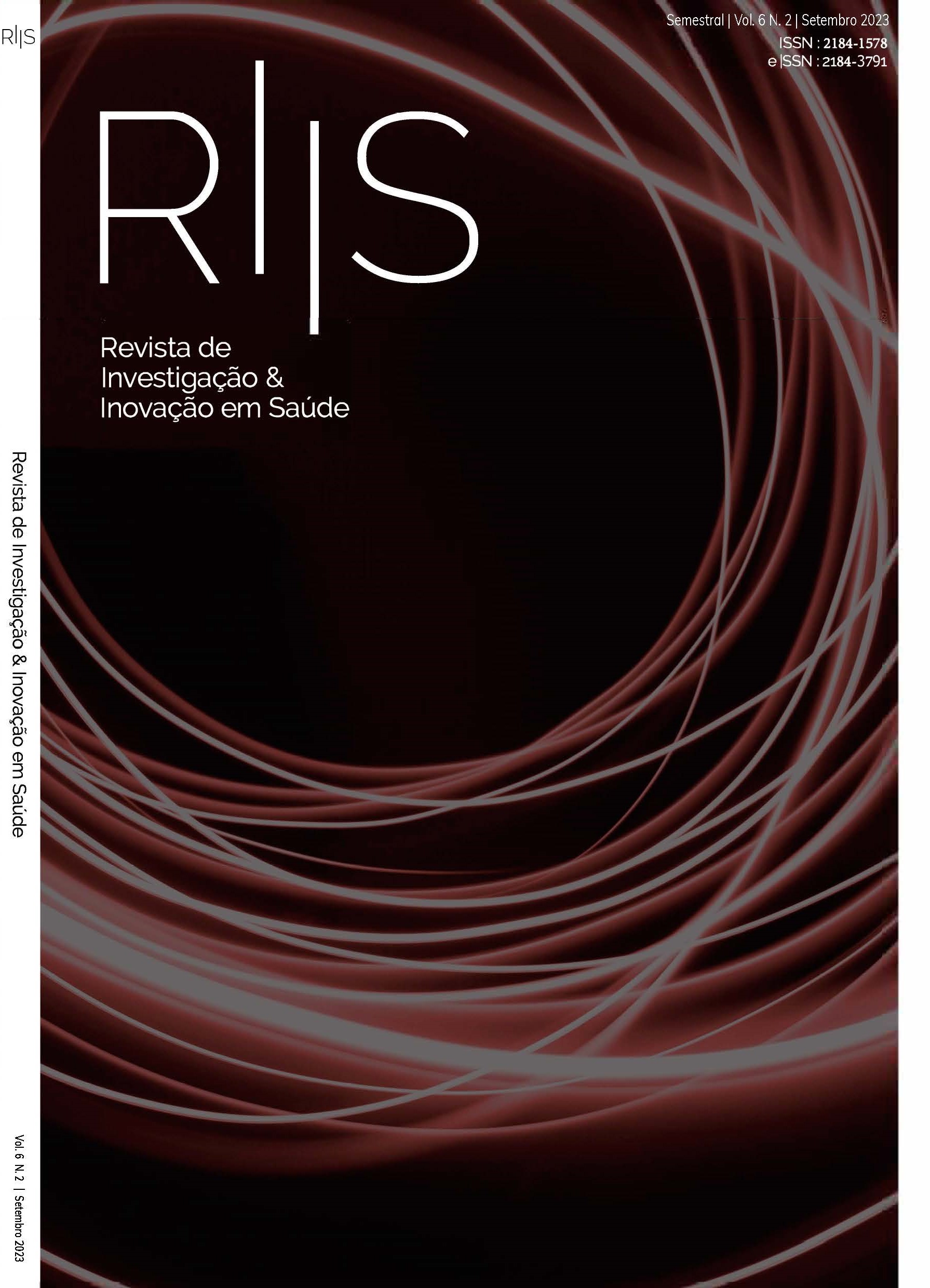Preparation of injectable medication performed by nurses: observational study
DOI:
https://doi.org/10.37914/riis.v7i2.320Keywords:
infection control, injections, patient safety, nursingAbstract
Background: the preparation of injectable medication is a clinical procedure often performed by nurses, and the literature highlights the low standardisation of practices between institutions and professionals, as well as deviations regarding safety principles. Objectives: to identify the nurses' practice in preparing injectable medication; assess the nurses' level of importance assigned to the safe preparation of injectable medication; and analyse the association between the importance assigned to the safe preparation of injectable medication and the socioprofessional variables. Methodology: observational, descriptive and cross-sectional study. Forty-five situations of injectable medication preparation were observed through an observation grid. Subsequently, 20 nurses completed a questionnaire on the degree of importance assigned to the safe preparation of injectables. Results: there were deviations from the recommendations that guarantee the safety of the procedure. A hygiene of the hands stood out positively (95.6% adherence). The questionnaire answers showed a discrepancy between the importance assigned by participants to safety and the practices observed. Conclusion: the results allow for a first analysis of the strengths and weaknesses of the preparation of injectable medication performed by nurses, allowing for the identification of intervention strategies that may contribute to improve the practices in use in the studied context.
References
Anwar, M. M., Mohamed Lotfy, A. A., & Alrashidy, A. A. (2019). Safe injection awareness and practices among nursing staff in an Egyptian and a Saudi hospital. Journal of the Egyptian Public Health Association, 94(1). https://doi.org/10.1186/s42506-019-0018-5
Bastos, C., & Barbieri, M. do C. (2020, dezembro, 14-18). Preparação de medicação injetável em contexto hospitalar: resultados de estudo piloto [Poster]. NursID Winter School 2020 – Semana de Investigação em Enfermagem, Escola Superior de Enfermagem do Porto, Porto.
Bhatia, M., Mishra, B., Sood Loomba, P., & Dogra, V. (2018). A pilot study for evaluation of knowledge and common practises of nursing staff regarding use of multidose injection vials and their microbial contamination rate in a super-specialty hospital, Journal of Education and Health Promotion, 7(1), 120. https://doi.org/10.4103/jehp.jehp_73_18
Borg, M. A. (2014). Cultural determinants of infection control behaviour: Understanding drivers and implementing effective change. Journal of Hospital Infection 86(3), 161–168. https://doi.org/10.1016/j.jhin.2013.12.006
Buchanan, M. O., Summerlin-Long, S. K., DiBiase, L. M., Sickbert-Bennett, E. E., & Weber, D. J. (2019). The compliance coach: A bedside observer, auditor, and educator as part of an infection prevention department’s team approach for improving central line care and reducing central line-associated bloodstream infection risk. American Journal of Infection Control, 47(1), 109–111. https://doi.org/10.1016/j.ajic.2018.06.005
Centers for Disease Control and Prevention. (2002). Hand Hygiene Guidance. https://www.cdc.gov/infection-control/media/pdfs/Guideline-Hand-Hygiene-P.pdf
Dolan, S. A., Arias, K. M., Felizardo, G., Barnes, S., Kraska, S., Patrick, M., & Bumsted, A. (2016). APIC position paper: Safe injection, infusion, and medication vial practices in health care. American Journal of Infection Control, 44(7), 750–757. https://doi.org/10.1016/j.ajic.2016.02.033
Gammon, J., Hunt, J., Williams, S., Daniel, S., Rees, S., & Matthewson, S. (2019). Infection prevention control and organisational patient safety culture within the context of isolation: Study protocol. BMC Health Services Research, 19(1), 1–8. https://doi.org/10.1186/s12913-019-4126-x
Hausemann, A., Grünewald, M., Otto, U., & Heudorf, U. (2018). Cleaning and disinfection of surfaces in hospitals. Improvement in quality of structure, process and outcome in the hospitals in Frankfurt/Main, Germany, in 2016 compared to 2014, GMS Hygiene and Infection Control, 13. https://doi.org/10.3205/dgkh000312
Institute for Safe Medication Practices. (2021). 2020-2021 Targeted Medication Safety Best Practices for Hospitals. https://www.ismp.org/sites/default/files/attachments/2020-02/2020-2021%20TMSBP-%20FINAL_1.pdf
Jackson, C., Lowton, K., & Griffiths, P. (2014). Infection prevention as “a show”: A qualitative study of nurses’ infection prevention behaviours. International Journal of Nursing Studies, 51(3), 400–408. https://doi.org/10.1016/j.ijnurstu.2013.07.002
Mendes, J. R., Lopes, M. C., Vancini-Campanharo, C. R., Okuno, M. F., & Batista, R. E. (2018). Types and frequency of errors in the preparation and administration of drugs. einstein (São Paulo), 16 (3). https://doi.org/10.1590/S1679-45082018AO4146
Ordem dos Enfermeiros. (2018). Membros activos.
Pina, E., Ferreira, E., Marques, A., & Matos, B. (2010). Infecções associadas aos cuidados de saúde e segurança do doente. Revista Portuguesa de Saúde Pública, Temático (10), 27–39.
Silva, M. G. D. G. M. Da. (2013). Controlo de infeção em Portugal: evolução e atualidade. Salutis Scientia - Revista de Ciências da Saúde da ESSCVP, 5, 2-8.
Strbova, P., Mackova, S., Miksova, Z., & Urbanek, K. (2015). Medication Errors in Intravenous Drug Preparation and Administration: A Brief Review. Journal of Nursing & Care, 4(5). https://doi.org/10.4172/2167-1168.1000285
Downloads
Published
How to Cite
Issue
Section
License
Copyright (c) 2024 Mariana Duarte do Vale Lima, Cristina Carvalho Pinto, Celeste Bastos

This work is licensed under a Creative Commons Attribution 4.0 International License.















